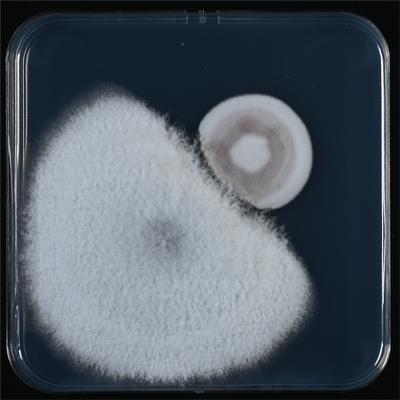Purpureocillium lilacinum CBS 150709
Organism description
The ascomycete Purpureocillium lilacinum CBS 150709, formerly known as Paecilomyces lilacinus, is a ubiquitous saprotroph, found in terrestrial and subaqueous soil, dead organic matter, and insects. The fungus is producer of a plethora of secondary metabolites and is also described as a biocontrol agent: P. lilacinum can invade the eggs of the nematodes that cause root-knot disease in tomato plants, and therefore it is considered a nematicide. Moreover, it inhibits the growth of the mushroom-forming fungus Schizophyllum commune during interaction on plate.

Figure. Purpureocillium lilacinum (upper right corner) during interaction with the mushroom-forming fungus Schizophyllum commune (lower left corner)
Reference
Please cite this paper when using data from this genome:Genome annotations for the ascomycete fungi Trichoderma harzianum, Trichoderma aggressivum, and Purpureocillium lilacinum.Beijen EPW, Ohm RAMicrobiol Resour Announc. 2024 Mar; 13(3): e0115323. doi: 10.1128/mra.01153-23
